Intro2-Computational-Neuroscience-w2
[TOC]
Neural Code
课程的第一个部分,由于神经科学在理解大脑处理感官信息方面比较成熟,因此将从这一方面入手。
- technique for recording from the brain(fMRA…)
- tools discovering how brain represent information
- model express our understanding of this representation
- some methods for inferring what the brain is doing based on its activity(in w3)
- using information theory to quantify neural representation(in w4)
- biophysical basis of how the brain process inputs and performs complex computations(in w5)
Recording
outside the cell:
- fMRI
- EEG ——electroencephalography
- faster response
both of them have the same shortage: can not recode one single neuron’s activity but an average of millons’
some ways to read single neuron:
- electrode arrays
- calcium imaging 钙离子荧光染色?神经冲动时钙离子内流,荧光强度代表活动强度
looking inside single cells:
-
patch electrodes
direct contact with inside of the cell
what is the neural code?

- cells in retina transfer the light signals to the electrical signals

[input]photoreceptors(rods and columns) ->successive layers of cells->[output]retinal ganglion cells->optic track(视神经束)->rest of the brain
一个实验:

将视网膜神经节细胞用营养液养好,下面铺着记录每个细胞spike与否的electrode array,然后给他们放电影看:D
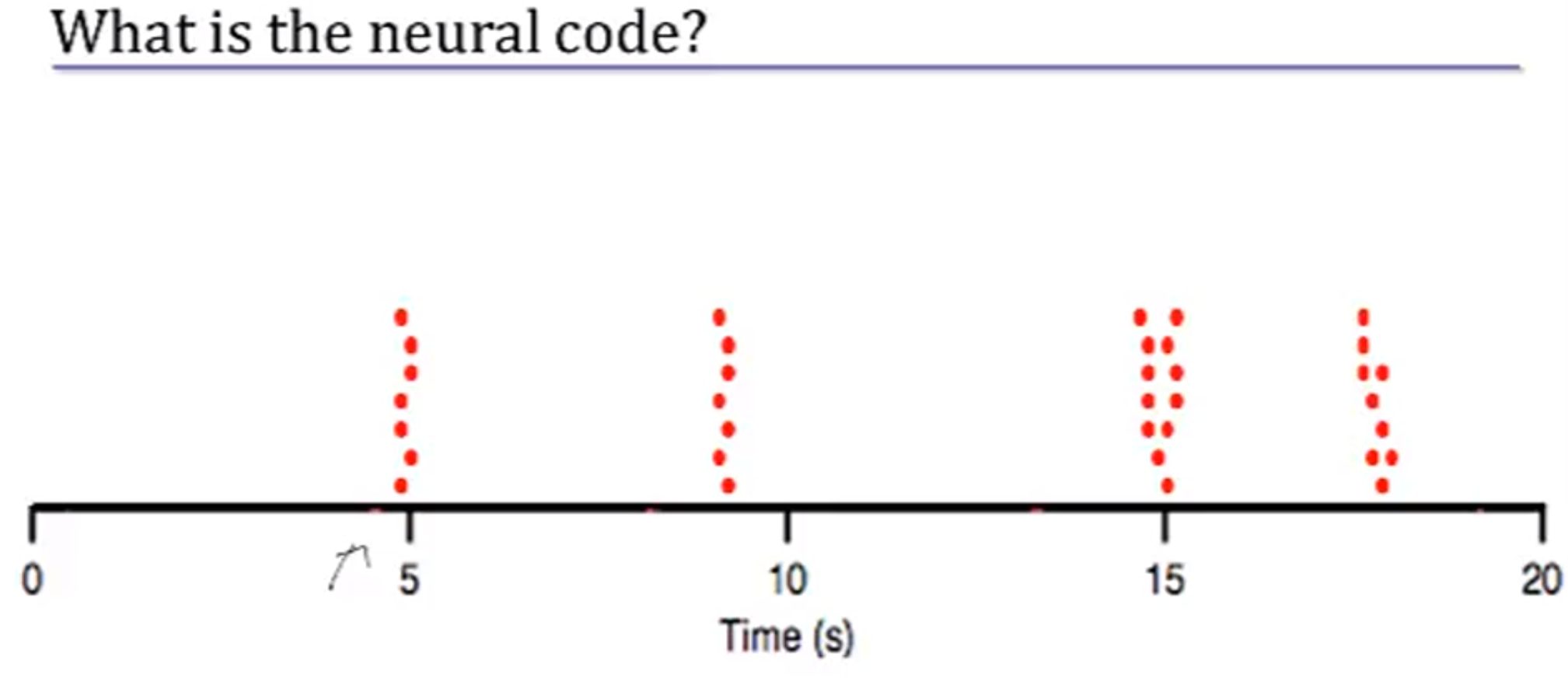
并且放很多遍,每遍都把该细胞兴奋的时间点标记出来,综合到上面一张图里,发现同一细胞兴奋点还真是差不多。。。像鱼吐泡泡一样。。。
然后把所有细胞的图绘制如下:
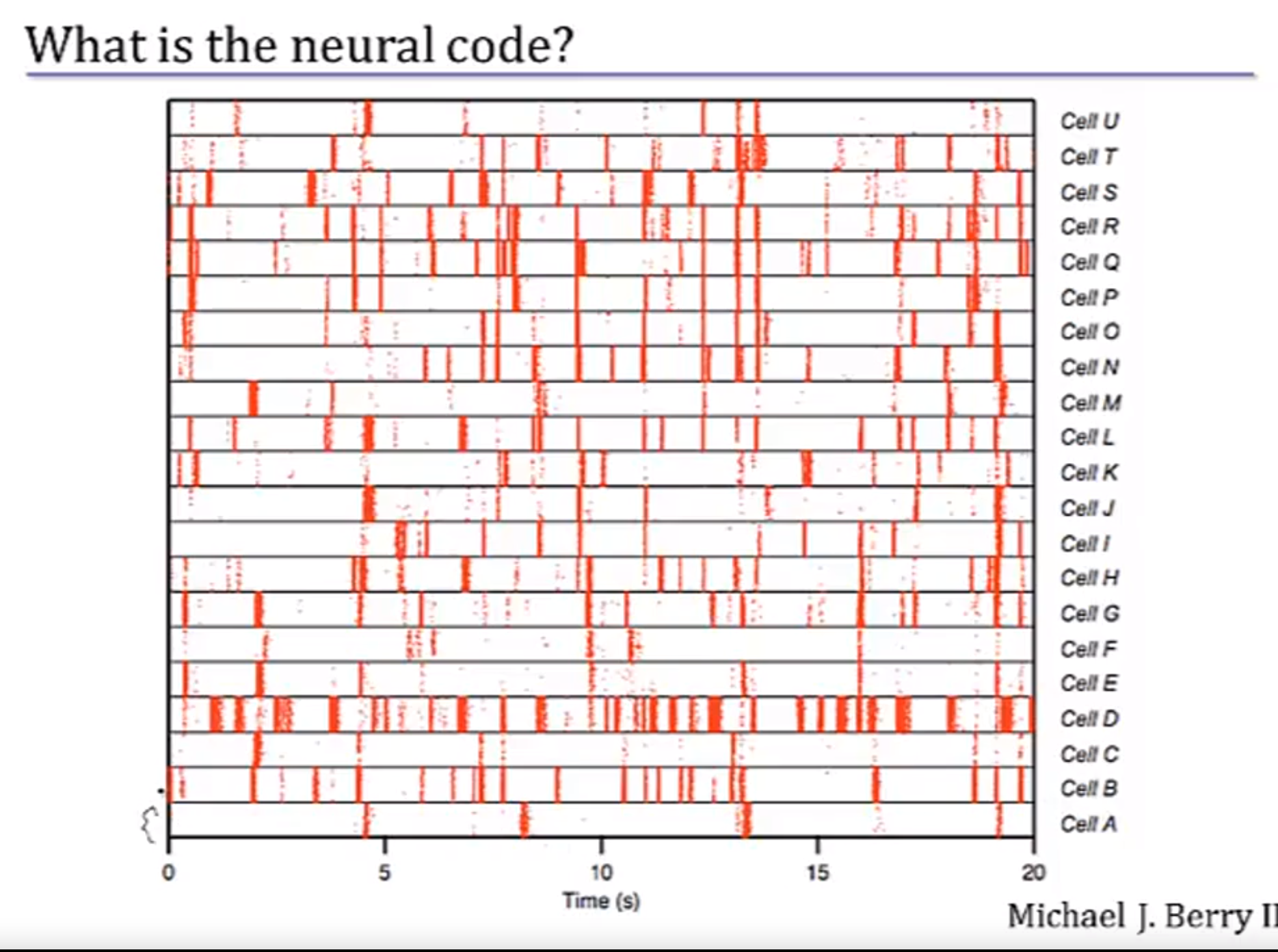
发现不同细胞都在对电影片段不同的细节进行编码(encoding),传送到大脑更高级的部位里。每个细胞都像是一个小电脑在高速编程……把外界信息处理成大脑可以理解的电信号。amazing.
-
Encoding: P(response stimulus) how does stimulus create a pattern of responses?
-
Decoding: P(stimulus response) what do these response tell us about the stimulus?
-
用密码学来解释: 大脑接收到的外界的刺激是密文,大脑作出的反应是明文。
从刺激预测反应是编码,从反应逆向刺激是译码
大脑对刺激反应的复杂度:
Geometric to semantic :从几何的到有语义的
interconnect: retina/LGN receives a massive amount of feedback from all these areas
expectation: what you think you’re looking at can shape what you actually see.(康德的认识论!)
(top-down effects)(semantic expectations)

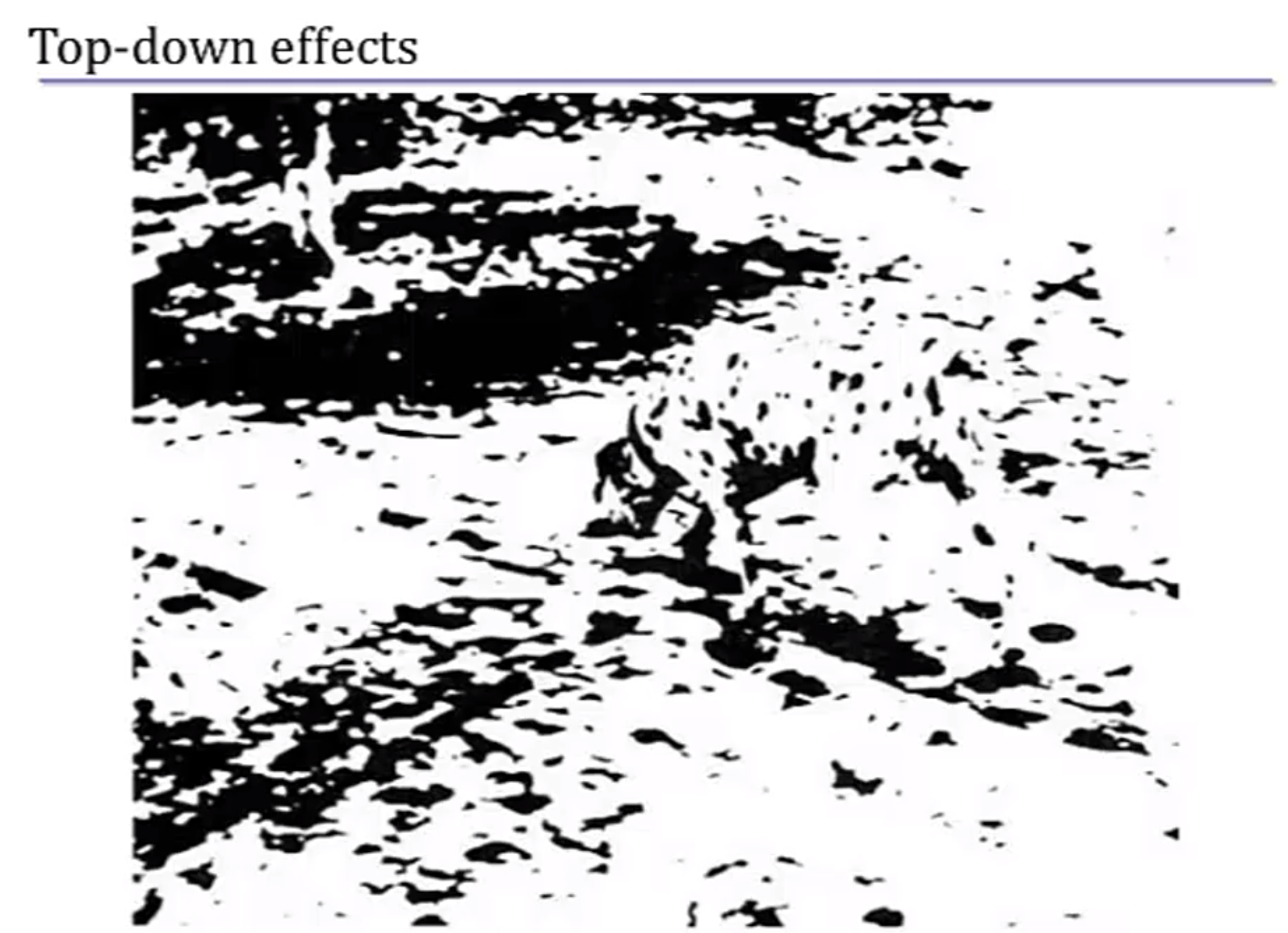
coding model
linear filtering
basic coding model: temporal filtering-时间滤镜
| $ P(response | stimulus) $ |
response: a single spike produced by a chosen neuron
$ r(t) $ : the probability seeing a spike at a certain time(firing rate)
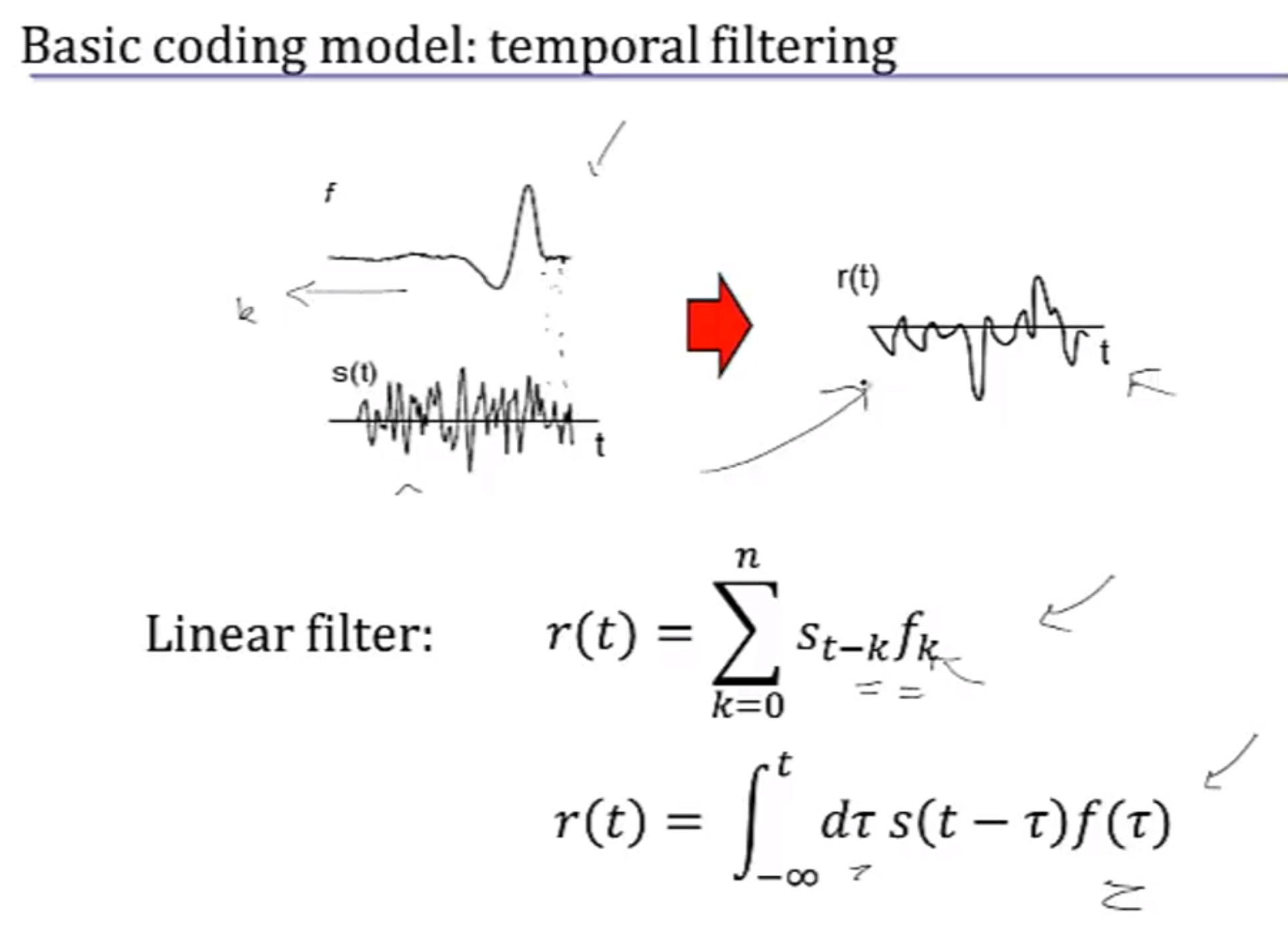
- $ r(t) = {\phi} \,s(t)$ or $ r(t) = {\phi}\, s(t-{\tau})$
- $ r(t) = \displaystyle\sum\limits_{k=0}^n\; s_{t-k}\, f_k$ or integral form: $ r(t) = \int_{-\infty}^t\, d\tau \, s(t-\tau) \, f(\tau)$ EG1: f(t) = 1/T EG2: f(t) = $ e^{t} $
basic coding model: spatial filtering-空间滤镜
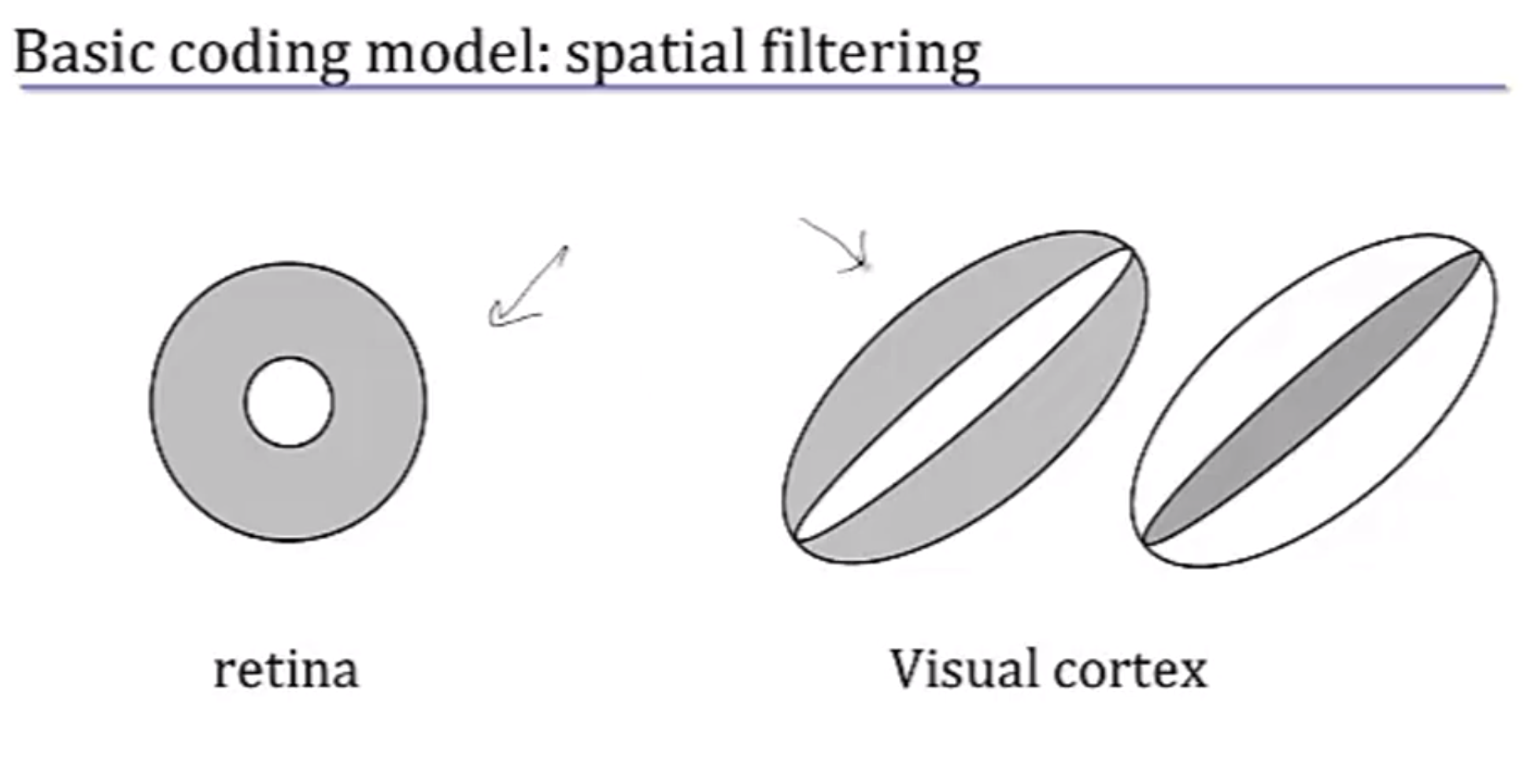
很容易推出对于r(t)描述的空间模型:
$ r(t) = \sum_{x’=-n,y’=-n}^{x’=n,y’=n}\, s_{x-x’,y-y’}\, f_{x’,y’}$
or r(t) = $ \int_{-\infty}^{\infty}\,dx’dy’s(x-x’,y-y’)f_{x’,y’} $
basic coding model: spatiotemporal filtering -时空滤镜
$ r_{x,y}(t) = \displaystyle\int!\int!\int dx’dy’d\tau \, f(x’,y’,\tau) s(x-x’,y-y’,t-\tau)$
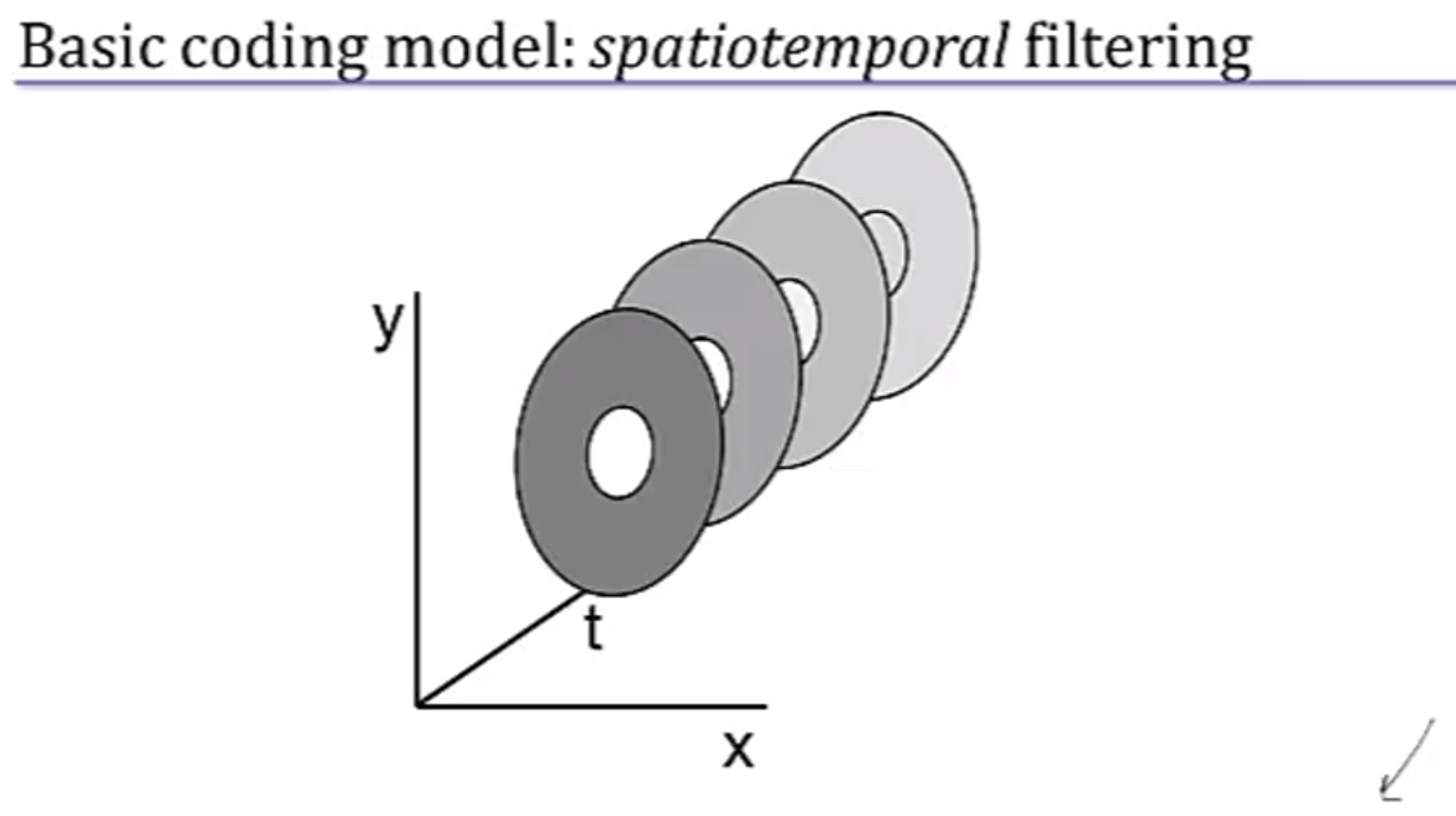
Standardized linear filtering
Linear filter & nonlinearity :$ r_{x,y}(t) = g\left(\int!\int!\int dx’dy’d\tau \, f(x’,y’,\tau) s(x-x’,y-y’,t-\tau)\right)$
Conclusion of basic coding model
-
r(t)肯定是一个跟s(t)有关的函数$r(t) = \phi s(t)$
-
若假设刺激与空间位置无关,只与时间有关,即当前s(current)与前 T s的s(t)有关,并且是这些值的线性和,权重服从函数f(t)(比如$f(t) = e^{-t}$),那么r(t)就是s(t)与f(t)的卷积:
$r(t) = \int_{-\infty}^t s(\tau)f(t-\tau)d\tau $ 离散的即:s(0)f(t)+s(1)f(t-1)+s(2)f(t-2)+…s(t)f(0)
-
若假设刺激与时间无关,只与空间位置有关,即与感受野内的刺激有关,并且把感受野内的刺激作一个线性组合,权重或者过滤函数为f(x,y),那么r(x,y)也同样是s(x,y)与f(x,y)的卷积:
$r(x,y) = \int_{-\infty}^x\int_{-\infty}^ydx’dy’\, s(x’,y’)f(x-x’,y-y’) $
这个像极了图象处理中的卷积,f即为卷积核。

On-Feature 的 retinal ganglion cells 的 f(x,y),表示当中心的像素是亮点时,f(0,0)*s(0,0)会是个很大的正数,提升了其r(t)即产生刺激的概率;当周围的像素是暗点时,f和s相乘会是一个绝对值比较小的负数,也相当于提升了r(t),否则,当周围也是亮点,由于该点的f(x,y)是负值,那么会降低细胞兴奋的概率。
-
最后我们将时空综合起来,得到一个相对合理的模型,同时考虑了时间和空间对r(t)的影响,并且加入非线性的g(x)使概率控制在合理的范围内(0-1),相当于对其标准化。
$ r_{x,y}(t) = g\left(\int!\int!\int dx’dy’d\tau \, f(x’,y’,\tau) s(x-x’,y-y’,t-\tau)\right)$
Feature Selection
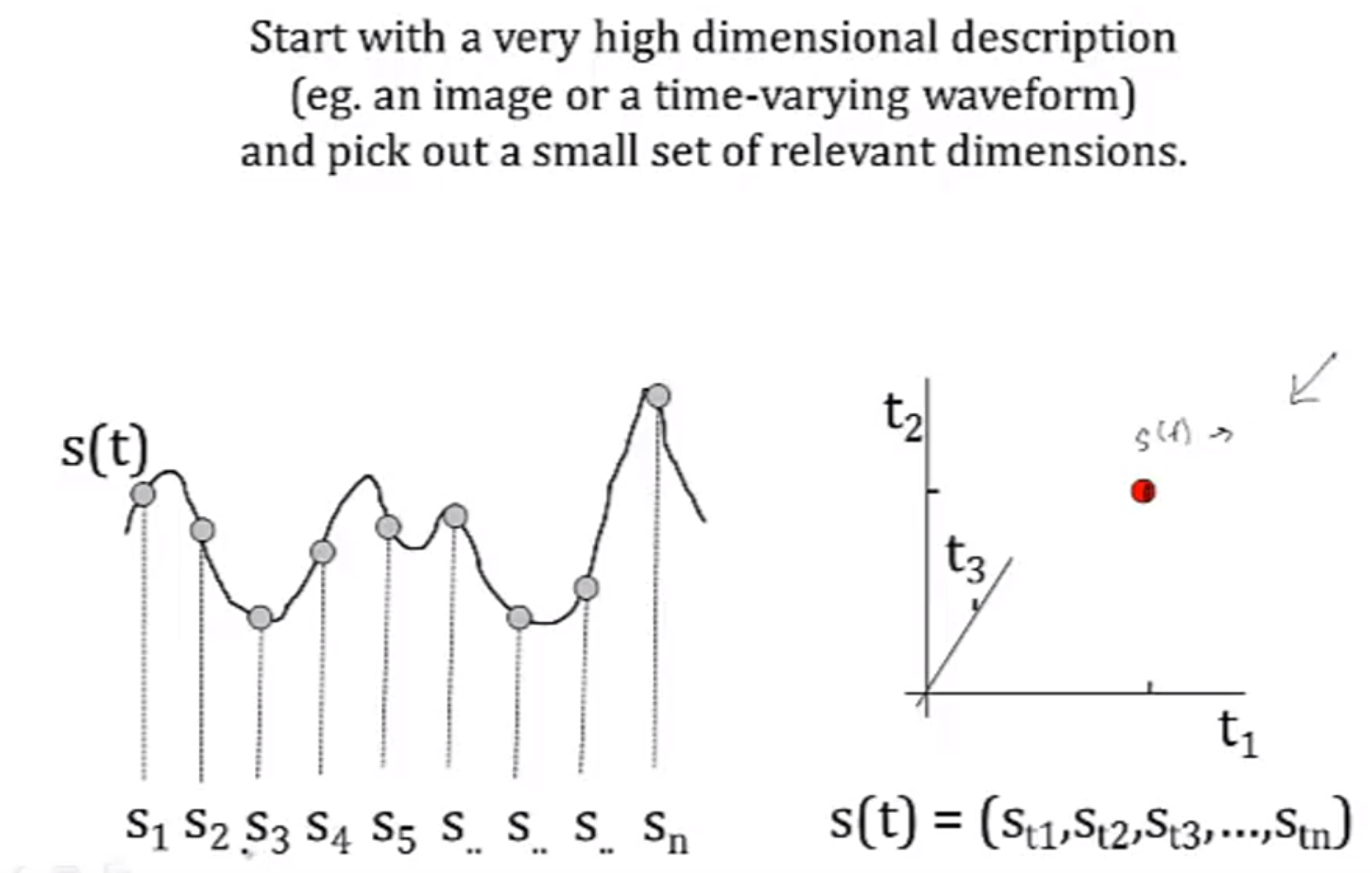
现在有一个问题:每一个样本点的数据量太大,我们需要把多余的,相关性强的数据整合成精简的数据
| 即用s1来代表整个stimulus: P(response | stimulus) -> P(response | s1) |
- Gaussian white noise
vacabulary list:
- calcium n. 钙
- florescent / flourescent a. 荧光的
- florescent property 荧光物质
- clamp 夹具 a device holds two things firmly together
- integral 积分的
- map...onto map the filtered stimulus onto the firing rate.
Enjoy Reading This Article?
Here are some more articles you might like to read next: